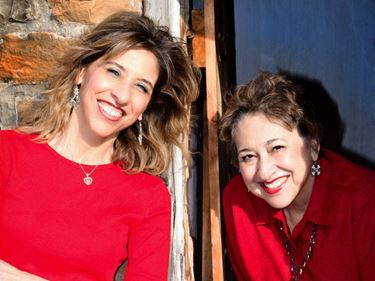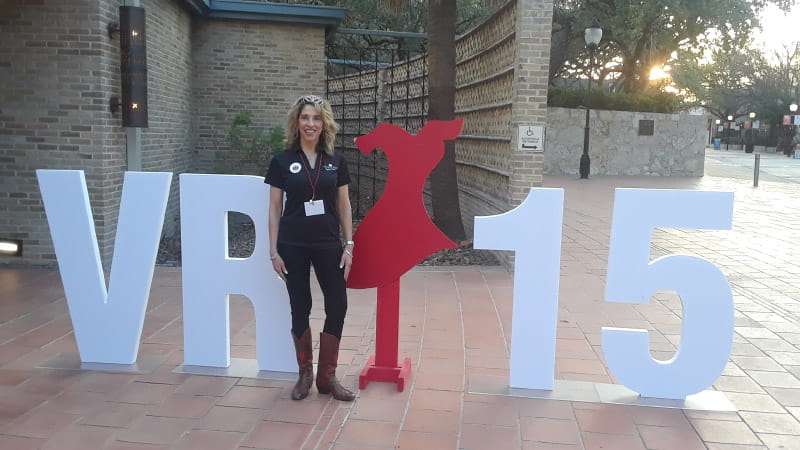Heart-pounding episodes led woman to discover an electrical problem
By Stefani Kopenec, American Heart Association News

Patricia Atiee woke up one night with her heart beating so rapidly that it terrified her. She was afraid to move and unsure what to think. The episode stopped after about a minute, but she was barely able to fall back asleep.
A week later, Atiee – then 24 – was driving with her dad when her heart began racing while at a stop light. When the light turned green, she pulled over. He asked if she needed to go to the hospital.
"No, I just need to let it pass," Atiee said.
A week later, it happened again while she was out with her sister in their hometown of San Antonio. They returned to her house and Atiee lay on the sofa. When she started to feel "very short of breath," her sister called an ambulance.
At the hospital, doctors diagnosed Atiee with a condition called Wolff-Parkinson-White syndrome. It means she had an extra electrical pathway in her heart that was causing the rapid heartbeat. Sometimes, Atiee's heart raced over 200 beats per minute.
"It was just pound, pound, pound, pound, pound!" she said.
Today, her condition would commonly be treated with a minimally invasive procedure called an ablation. But this was 40 years ago. An ablation would have required open-heart surgery. Doctors first tried medication.
When the episodes continued, her family reached out to a doctor who was doing research on the heart's electrical system. He agreed to work with Atiee. In the cardiac catheterization lab, he mapped the faulty pathway, then administered different medicines to find one that stopped the irregular rhythm.

It was five years of trial and error with medication. At least three or four times a year, Atiee would rush to the hospital when her heart began pounding incessantly.
"I'd have an episode at work. I'd have an episode at the grocery store. I had an episode on the ballfield one time when I was playing softball, and I just got up to bat. I just kind of collapsed there," she said.
One time she was set to perform with her belly dance group at the local mall when her heart began pounding and she hyperventilated. The teacher called an ambulance and Atiee was carted off through a department store in full costume.
"I remember they were taking me through there and I felt like saying, 'Just put a sheet on my head, too. I don't want anyone to see,'" Atiee said.
The suddenness of the attacks was frightening.
"It was a very scary time for her and for us," said Helen Vallejo, one of Atiee's five siblings. "It was really affecting her and her work. She never knew when it was going to happen. It was scary to even drive. It didn't matter what she was doing. It was just going to appear whenever."
Eventually Atiee's doctor sent her to a specialist in Houston who was "doing a new procedure for this." First that doctor evaluated her for a pacemaker. But he said she wasn't a good candidate and told her she needed an operation.
Finally, five years after the episodes began, Atiee had open-heart surgery to remove the tissue that was causing the abnormal rhythm.
"My scar reminds me where I've been and where I need to go," said Atiee, now 62.
As Atiee recovered from her surgery, her dad had a massive heart attack. She rode with him in the back of the ambulance clutching the heart-shaped pillow she used to brace her tender chest as part of her recovery. Her dad had previously had a stroke, making him one of many relatives with cardiovascular problems.
Her grandfather had several strokes and died at 65. Her mother also had a stroke, and all her siblings have heart issues. Among her family, only Atiee was diagnosed with Wolff-Parkinson-White syndrome.
While that extra pathway was eliminated, she still has an irregular heartbeat that she treats with medication. Atiee sees both a cardiologist and an electrophysiologist.

For nearly 20 years, Atiee and Vallejo have been part of a women's health conference in San Antonio called Vestido Rojo, or Red Dress. The event is geared toward Hispanic women and includes speakers, health screenings, wellness classes and even skits. One year, the sisters wrote and performed a sketch about healthy cooking habits and talked about reducing salt while making tamales.
Vallejo is proud of her sister's tenacity in facing her challenges so she could live the life she wanted. Atiee admits it wasn't easy, but she wants to be an example for others and inspire them to "put on that red dress of courage."
"There are women out there all over the place that are having problems with their heart," she said. "It's tough, but it can be done and you can be a survivor."
Stories From the Heart chronicles the inspiring journeys of heart disease and stroke survivors, caregivers and advocates.





